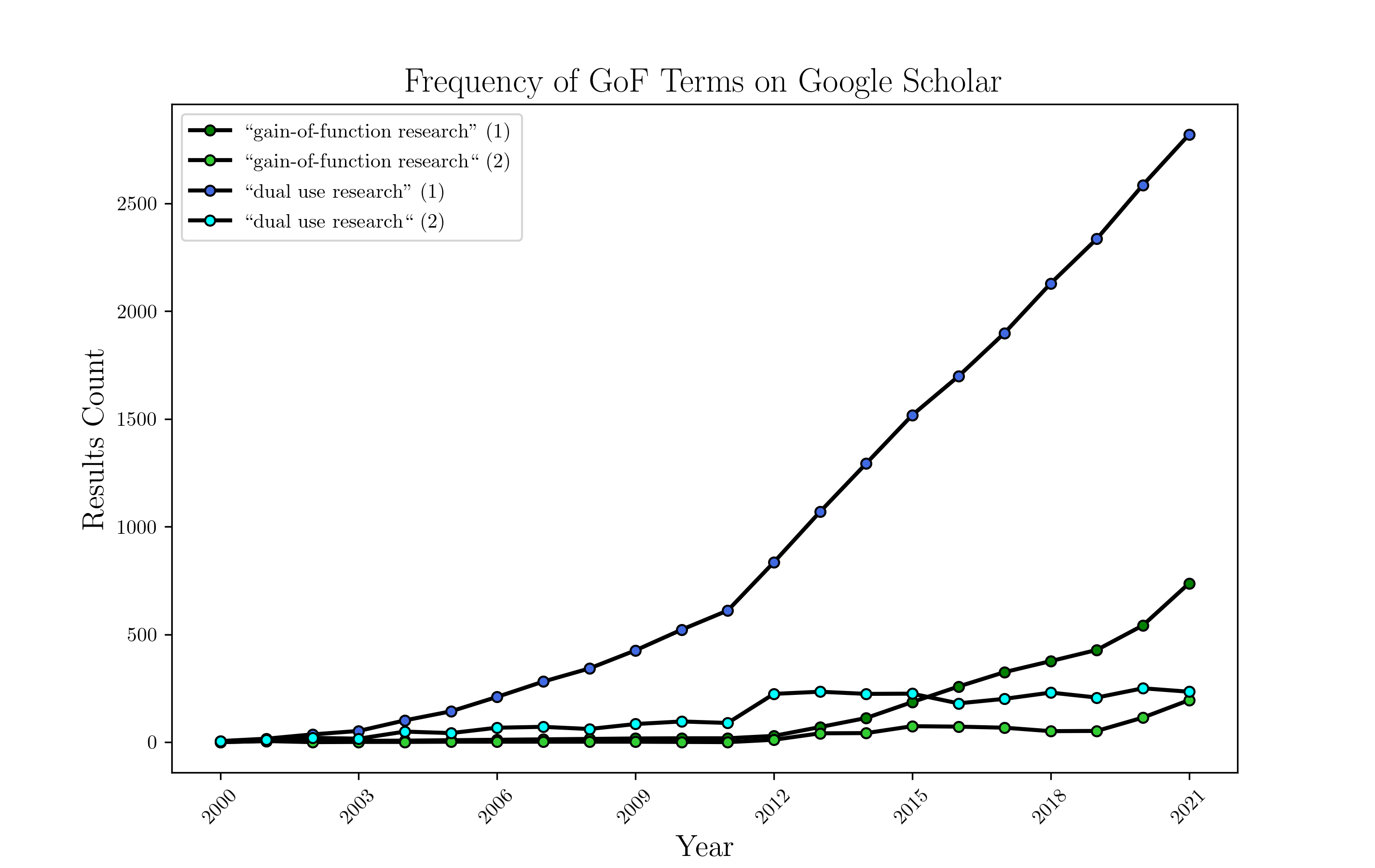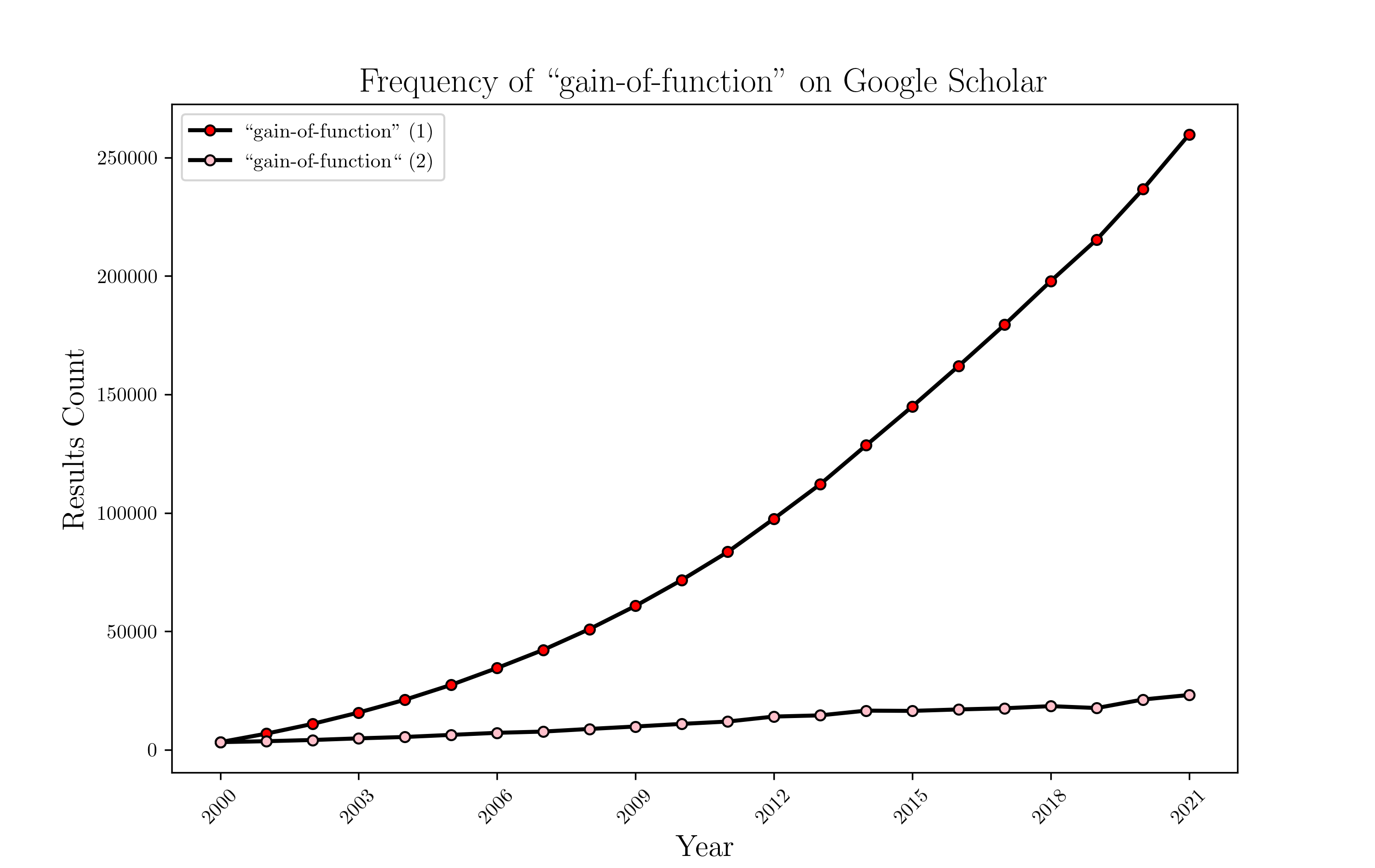Given the advance in underlying biological tools/technology, I would not find it surprising if gain-of-function research had increased 10x over the last decade. (This is just based on priors; getting an actual estimate is the point of this question.)
Why is this interesting? Assuming that both original covid and at least one strain were lab leaks, the rate of growth of gain-of-function research has a huge impact on how often we should expect future pandemics from lab leaks. If the amount of gain-of-function research has been roughly constant over the last 20 years, then the two covid leaks suggest a base rate of something like one or two pandemic-level leaks every 20 years, and covid was probably unusually hard to contain in a lab for some reason on top of that. On the other hand, if the field has grown 10x in the past 5 years, that suggests a base rate more like a leak every 2-3 years (and probably getting faster over time as the field continues to grow). If that's the case, then the base rate for pandemics will be way higher going forward than in the past.


One challenge here is that GOF research is a charged ethical issue, and if you look at the papers, a lot of them are on the ethical concerns. Another chunk is looking at gain of function mutations in cancer, which is irrelevant. Researchers engineering gain of function mutations in pathogens don’t necessarily put that language in the title or abstract. For example, the infamous avian flu GOF research by Fouchier in ferrets didn’t use the term “gain of function” in the title or abstract.
There’s a baseline growth rate for research generally, and output doubles about every 17 years. Given the charged nature of GOF research and the recent moratorium, I’d expect its publication pattern to diverge from the general rate. And since it’s a small field, I’d also expect that noise from irrelevant findings to swamp any signal from the kind of potential pandemic enhancing research we are worried about.